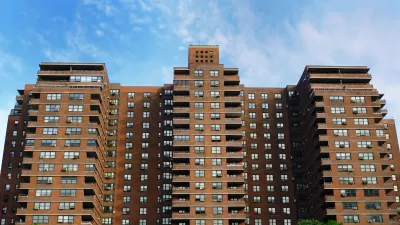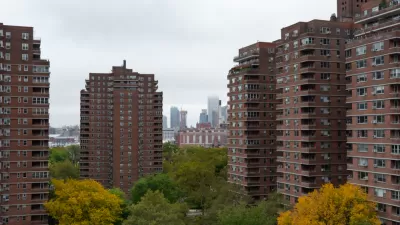The New York City Housing Authority is facing scrutiny after residents went almost a month without power, Nicole Anderson reports.
When Hurricane Irene tore through New York last August, the damage paled in comparison to that wrought by Hurricane Sandy, giving authorities a false sense of security about the strength of their disaster response plans. And so the recent storm has left the New York City Housing Authority, and its relationship with its tenants, the worse for wear.
The NYCHA finally announced last Monday, nearly a month since Sandy first touched down, that it had restored power to all 402 of the buildings hit by the storm. In the meantime, however, the Authority has faced a deluge of complaints concerning mold and structural stability, despite official statements to the contrary.
"June Clarkson, a resident who has lived Red Hook House East for 51 years, said that on the outside of her building it appears that bricks are coming loose, and inside her apartment she believes something like 'asbestos is bubbling' from the ceiling," Anderson notes.
“NYCHA said they were going door-to-door before and we have heard different stories. We’ll see if that happens,” said Ellen Davidson, staff attorney at Legal Aid. “Some of what they say sounds like it might be useful on its face, but they have been making a whole lot of promises especially to those who are home-bound and elderly, and we have run into many tenants who say that door-to-door visits never happened.”
In addition, many units are still being temporarily powered by generators, which, in Anderson's words, "makes NYCHA’s claim that 'essential services have been restored to nearly 80,000 residents' a bit of an exaggeration or perhaps wishful thinking."
FULL STORY: Public Housing After Sandy

Maui's Vacation Rental Debate Turns Ugly
Verbal attacks, misinformation campaigns and fistfights plague a high-stakes debate to convert thousands of vacation rentals into long-term housing.

Planetizen Federal Action Tracker
A weekly monitor of how Trump’s orders and actions are impacting planners and planning in America.

San Francisco Suspends Traffic Calming Amidst Record Deaths
Citing “a challenging fiscal landscape,” the city will cease the program on the heels of 42 traffic deaths, including 24 pedestrians.

Defunct Pittsburgh Power Plant to Become Residential Tower
A decommissioned steam heat plant will be redeveloped into almost 100 affordable housing units.

Trump Prompts Restructuring of Transportation Research Board in “Unprecedented Overreach”
The TRB has eliminated more than half of its committees including those focused on climate, equity, and cities.

Amtrak Rolls Out New Orleans to Alabama “Mardi Gras” Train
The new service will operate morning and evening departures between Mobile and New Orleans.
Urban Design for Planners 1: Software Tools
This six-course series explores essential urban design concepts using open source software and equips planners with the tools they need to participate fully in the urban design process.
Planning for Universal Design
Learn the tools for implementing Universal Design in planning regulations.
Heyer Gruel & Associates PA
JM Goldson LLC
Custer County Colorado
City of Camden Redevelopment Agency
City of Astoria
Transportation Research & Education Center (TREC) at Portland State University
Jefferson Parish Government
Camden Redevelopment Agency
City of Claremont




























